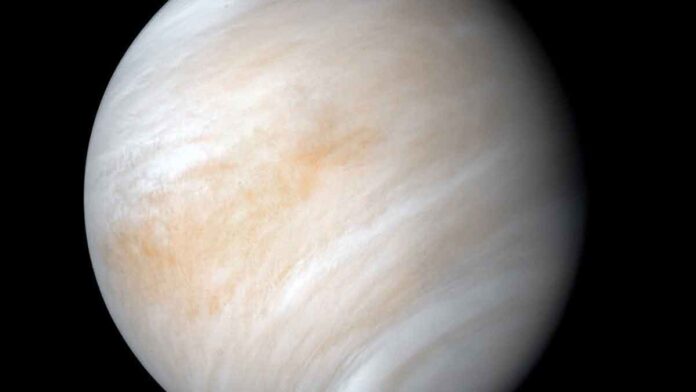The discovery of phosphine above Venus’s clouds was announced in 2020. Then the Stratospheric Observatory for Infrared Astronomy (SOFIA) conducted follow-up observations to confirm or refute the finding. Its observations revealed that there is no phosphine in Venus’s atmosphere. It is a potential biomarker that could be an indicator of organic matter or life.
Venus is considered Earth’s twin in many ways. But one difference has become clear thanks to SOFIA. That is Venus, unlike Earth, lacks visible phosphine.
Phosphine is a gas that exists in the Earth’s atmosphere. But the discovery of phosphine above Venus’s clouds made headlines in 2020. The reason for this was because of its potential as a biomarker. In other words, phosphine may be a sign of life. Though common in the atmospheres of gas planets such as Jupiter and Saturn, phosphine is associated with biology on Earth. It is formed in bogs, swamps, and marshes by decaying organic matter.
There may be other ways for phosphine to form on a rocky planet, such as through lightning or volcanic activity. But none of these apply if there is no phosphine on Venus. And there isn’t, according to SOFIA.
SOFIA is a 747-based far-infrared telescope. It has recently completed its science operations in September 2022. It searched for hints of phosphine in Venus’s sky over three flights in November 2021. SOFIA was able to perform observations which is not possible with ground-based observatories due to its operation from the Earth’s sky.
Its high spectral resolution also allowed it to detect phosphine at high altitudes in Venus’s atmosphere. It was approximately 45 to 70 miles (75 to 110 kilometres) above the ground.
The researchers found no evidence of phosphine. According to their findings, if phosphine is present in Venus’s atmosphere at all, it amounts to a maximum of about 0.8 parts phosphine per billion parts everything else. It is much lower than the initial estimate.
It was difficult enough to point SOFIA’s telescope at Venus. The window for viewing Venus was limited, about half an hour after sunset. The aircraft had to be in the right place at the right time. Venus, like the Moon, goes through phases. This made it difficult to centre the telescope on the planet.
Despite the fact that the group did not discover phosphine following the stressful observations, the study was deemed a success. Together with data from other observatories that probe different depths within Venus’s atmosphere, SOFIA findings add to the body of evidence against phosphine anywhere in Venus’s atmosphere.

